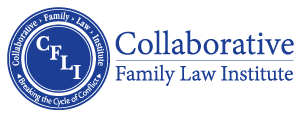Communication in Collaborative Divorce: It’s Not What You Said, It’s How You Said It, It’s How I Heard it, It’s How I Interpret It
by Rosemarie S. Roth, Esq. and Lana M. Stern, Ph.D. Florida Collaborative Trainers, www.floridacollaborativetrainers.com
Communications are a critical component in the Collaborative Process. It should be so simple – I say something, you hear it – everything is fine! So what can go wrong? Just about everything! Communication is so central to everything we do, think and feel that we hardly give it a moment’s pause. It is comprised of many parts – spoken and written language, body language, cognitive distortions (how we interpret what we hear and see) and more.
The Collaborative Process helps educate divorcing spouses on the tone and content of information being shared and how to actively listen and respect another person’s point of view. Tone and inflection of spoken language are among the key components of verbal communications. Nonverbal messages are transmitted by facial expressions, eye contact and positions, physical touch, dress, posture and even the physical space between people. Written language lacks these nuances and is open to interpretation by the reader. Our gestures and body language transmit more than what we say or mean. Cognitive distortions describe how we interpret what we see, hear and say since they are automatic and unconscious reflections of our own biases and experiences (people are notdeliberately misinterpreting). We filter out what we don’t want to hear, see things as “black or white,” jump to conclusions, catastrophize, personalize, blame and label. Mix in cultural diversity, and it becomes immediately obvious just how complicated communications can be. Consistent verbal and non-verbal communications can help a divorcing spouse send the “real” messages that we mean to convey and enhance understanding of one another.
In the Collaborative Process, commands, critical language, moralizing, threats and name calling will immediately shut down a dialogue. In the Collaborative Team meetings, if distortions occur, a reset permits the divorcing spouses to achieve equilibrium to be able to listen to each other. Honest, open communications between the divorcing spouses and the Collaborative Team will enable effective dialogue to reach a meaningful settlement.
